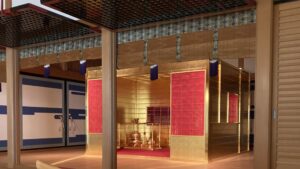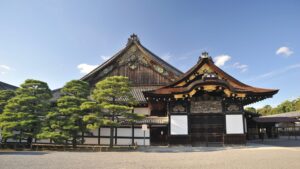Koyasan, a mountain-top religious city of the Shingon Esoteric Buddhism
The Candle Festival is held on August 13th to pray for the spirits of all deceased at Koyasan - a World Heritage Site - located about 850 meters above sea level. Approximately one hundred thousand votive candles line the 2 km approach to Okunoin, surrounded by Japanese cedar trees, creating a solemn atmosphere in the thick darkness. In addition, the Mando kuyo-e (萬燈供養会) is held at Lantern Hall of Okunoin. The first candle was lit in 832 by Kukai (774-835, 空海) to pledge to relieve the people forever. Kukai is believed to have been in deep meditation, and his meals are served every day at Okunoin. Why is Kukai considered to be alive?
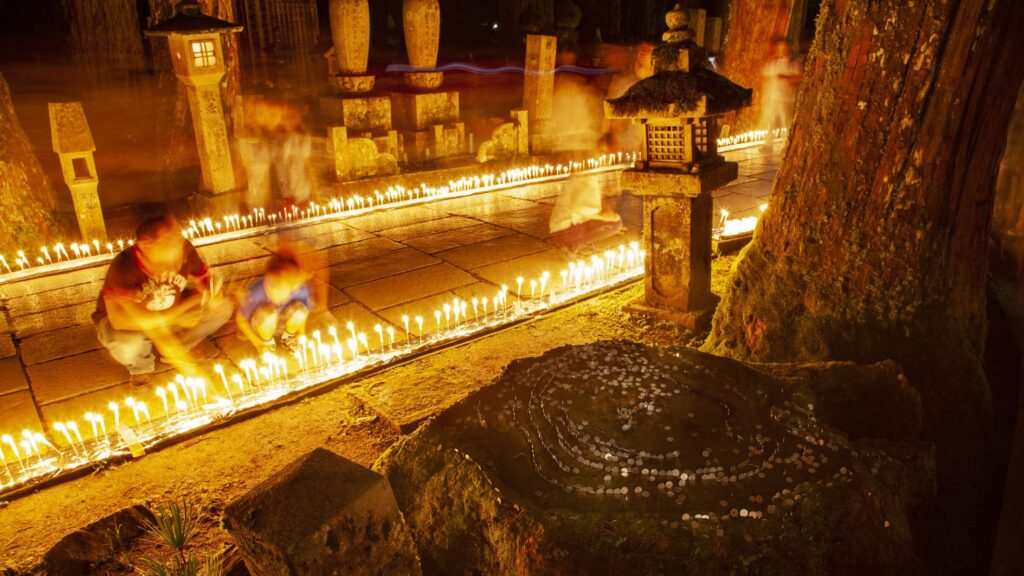
Mystical Experiences Guided Kukai to Shingon Esoteric Buddhism
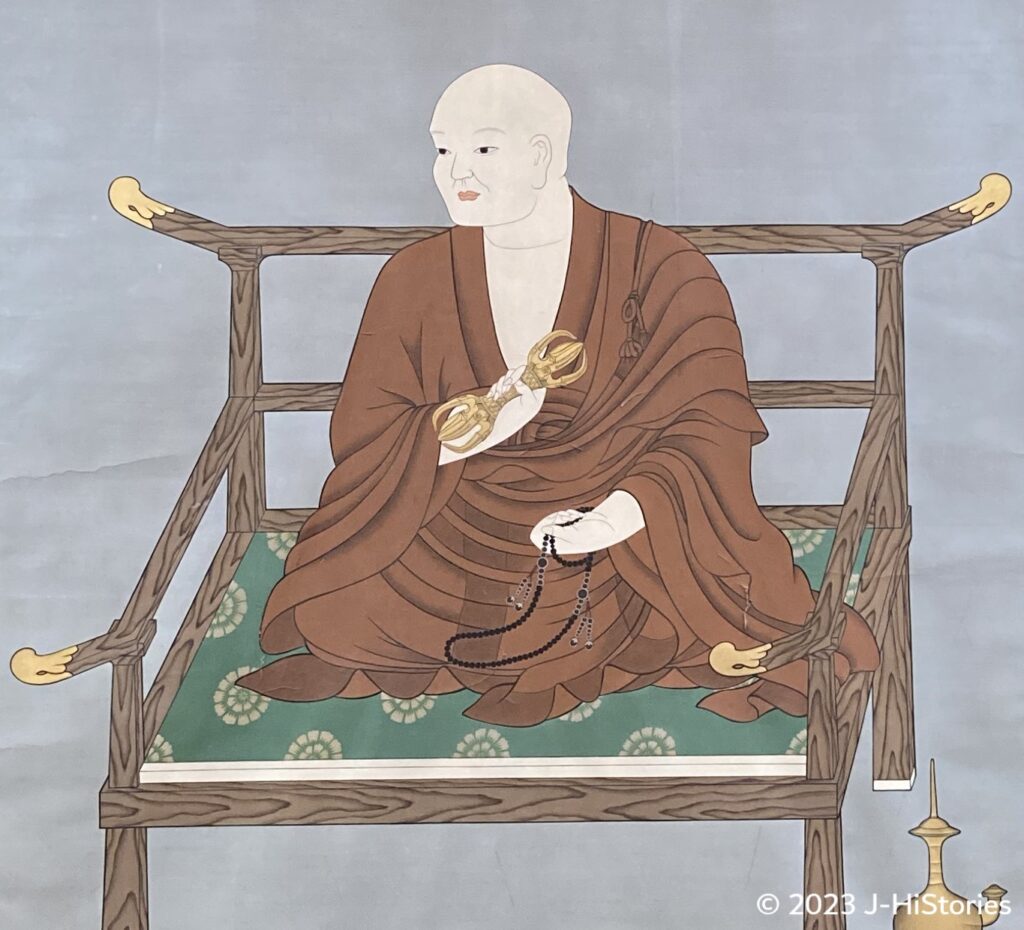
While studying to become a bureaucrat at university, Kukai (774-835, 空海) felt unsatisfied and started to study Buddhism in the depths of the Yoshino forest and mountains in the south of Nara prefecture at the age of 19. While training in Mikurodo cave at Muroto-Misaki cape, he suddenly saw twinkling starlight that entered his mouth, and immediately he felt the unification with the macro-cosmos. This mystical experience motivated him to visit the Tang dynasty to learn what his experience signified in Buddhism. There, he received all orthodoxies After his return to Japan in 806, Kukai started to engage in missionary work and established a new training base on Koyasan at the age of 43. During this period, traditional Buddhist teachings emphasized ascetic practices to achieve enlightenment. However, Shingon Esoteric Buddhism introduced a new theory, stating that everyone is a manifestation of Dainichi Nyorai (Vairocana) and has Buddha nature within them. This teaching suggests that one can achieve enlightenment while still alive by looking at oneself, practicing to feel one with Buddha, and awakening to Buddha's nature.
Kukai Cut Grudge Spirits Off and Supported Emperors
During Kukai's study of Buddhism in the Tang dynasty, the 50th Emperor Kanmu (737-806, 桓武天皇) faced the spread of plague, natural disasters such as the great earthquake, and the eruption of Mt. Fuji, as well as the death of his mother, lawful wife, and lady one after another. In ancient times, these phenomena were believed to be caused by Onryo (the restless spirits of people who died with grudges). In particular, he feared his brother Prince Sawara's Onryo who fasted in anger and died of starvation under suspicion of treason, even though Prince Sawara pleaded his innocence to Emperor Kanmu. In 806, Kukai returned to Japan from the Tang dynasty just after the 51st Emperor Heizei (774-824, 平城天皇) accended the throne following Emperor Kanmu’s death. Emperor Heizei abdicated from the throne due to his delicate health just three years later, passing the throne to his younger brother, the 52nd Emperor Saga (786-842, 嵯峨天皇). However, in the following year in 810, the retired Emperor Heizei raised an army in an attempt to retake the throne. Kukai suggested to Emperor Saga that they should enter a Buddhist monastery and become his disciples to break the chain of Onryo’s tragedies. Kukai also offered his assistance in situations where, at the time, political power struggles often resulted in the losers being pushed to death. Through the guidance of Kukai and the practice of Esoteric Buddhism, they could awaken their Buddha natures and the cycle of violence ended. Additionally, Kukai was known to recite incantations and offer prayers for Emperors, princes, and nobles to eliminate the calamitous conditions believed to be caused by Onryo, using various tools such as "Sankosho" (Buddhist weapon) to cut through "Bonno" (earthly desires) and "Goma" (burn away the spirit of evil thoughts with fire). As a result of Kukai's efforts, the incessant political strife subsided and the peaceful reign of Emperor Saga, who was a close friend of Kukai, flourished.

The Religious City in the Sky of the Mandala World Itself
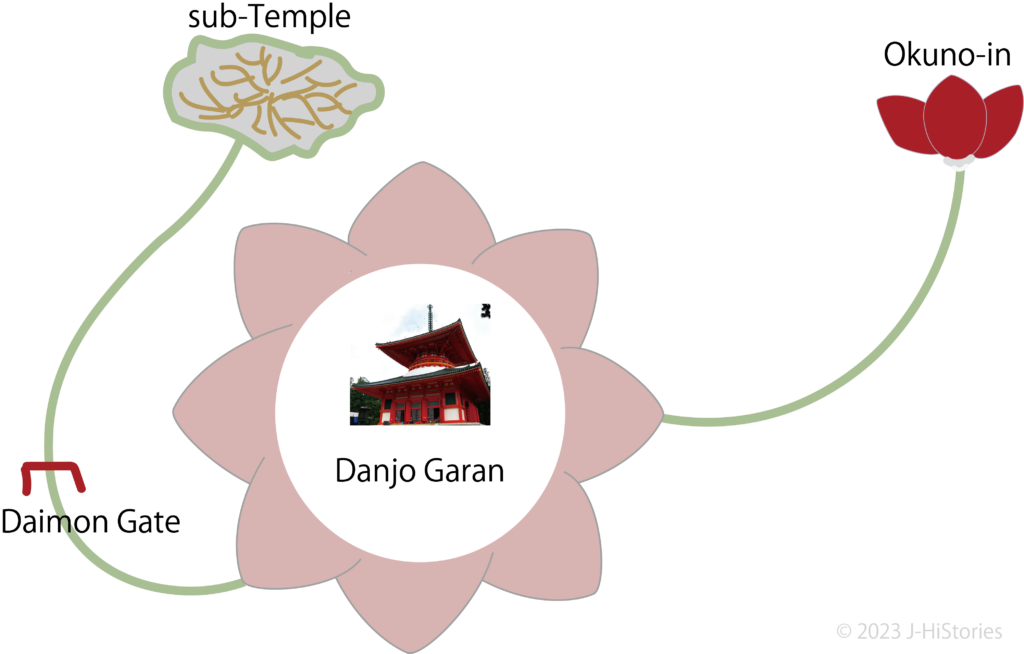
In 816, Kukai was granted permission by Emperor Saga to build the Koyasan as the training center of Shingon Esoteric Buddhism on a desolate mountain far from Kyoto. First, he set a ritual boundary between the secular and the sacred areas, then designated the entire mountain as a huge precinct. It is called "the precincts of a single mountain”. Have you noticed that the shape of Koyasan resembles a lotus flower, which symbolizes a mandala? The 16 surrounding mountains are seen as lotus leaves, corresponding to the 16 great Bodhisattvas of the mandala. A drawing of the "Lotus Mandala" expresses Koyasan well. It shows Danjo Garan (Temple complex) on a lotus pedestal. The lotus leaves at the tip of the stem on the left side represent a sub-temple, which is the starting point for ascending Koyasan through the Daimon Gate. At the tip of the branch extending to the right is the Okunoin sanctuary. The lotus image expresses well that Koyasan was thought to be the lotus flower itself in bloom in the world of the Buddha, in short, the Pure Land of this world itself.
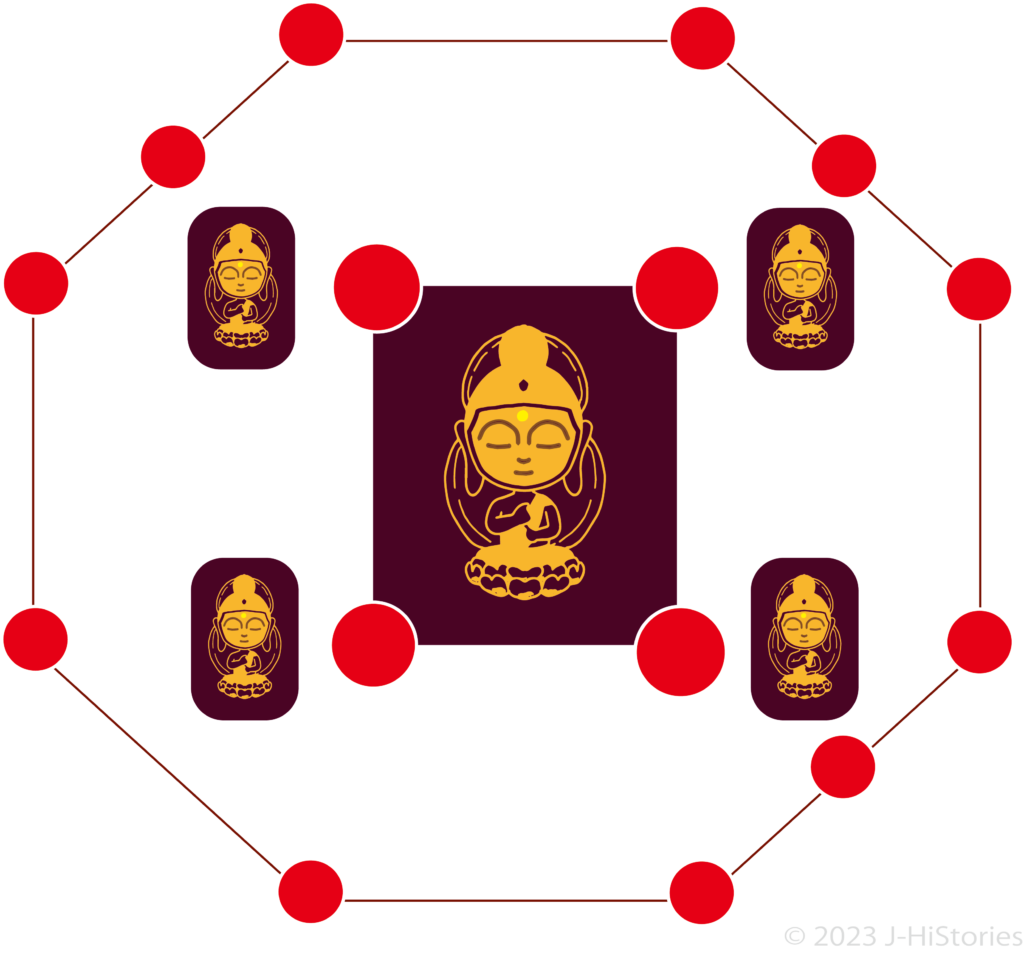
The Konpon Daido (Principal Pagoda) at Danjo Garan has a statue of Dainichi Nyorai at its center, surrounded by four statues of Buddha, and encircled by sixteen vermilion pillars with vivid images of Bodhisattvas painted on each. If you imagine viewing this arrangement from above, you can observe that it expresses the mandala. Therefore, these statues are called a three-dimensional mandala. Koyasan is a holy city in the sky, a mandala world itself, thanks to the many layers of Kukai's devices. To visit Koyasan is to be in the mandala world, or the Pure Land.
(References: 『はじめての「弘法大師信仰・高野山信仰」入門』by an associate professor, Kitagawa Shinkan)
In 823, Kukai was granted the Toji Temple, a government temple located in Heian-Kyo (the ancient capital of Kyoto), due to the deep trust of Emperor Saga. He then created a three-dimensional Mandla with several Buddha statues. To-ji was the base for the spread and propagation of Shingon Esoteric Buddhism in Kyoto.
Kukai Has Relieved the People Continuously
When Kukai realized that he would die soon, he holed up in Koyasan. The following year, at the Mando-Mange-E Festival, he expressed his belief in a written petition: “My wishes would be extinct if space were extinct, the general public was extinct, and Nirvana was extinct” (虚空盡き、衆生盡き、涅槃盡きなば、我が願いも盡きなん). This means that his wish will not end until all living things are filled with peace and happiness. Kukai's gentle watchful gaze has been upon us ever since. Three years after the festival, Kukai entered the next world at the age of 62. However, he is believed to be alive, and every day for about 1200 years, his meals have been served at Okunoin, even on rainy and snowy. Please immerse yourself in the world of Shingon Esoteric Buddhism at Koyasan. The must-visit places are Danjo Garan and Okunoin. You may feel Kukai’s greatness and benignancy at Okunoin.
Kukai Timeline
| 774 | Kukai was born | Age=1 | Nara Period |
| 785 | Saicho received religious precepts at Todaiji | 11 | |
| 787 | Saicho lit the Eternal Light | 13 | |
| 791 | Kukai started to study in Kyoto | 18 | |
| 794 | The relocation of the capital to the city to Heian-kyo in Kyoto | 21 | Heian Period |
| 804 | Kukai became a monk and left Naniwa port for Tang | 31 | |
| 804 | Saicho left Japan to Tang | - | |
| 805 | Kukai met Keika and learned Shingon Buddhism | 32 | |
| 805 | Saicho established Tendai sect of Buddhism | 32 | |
| 806 | Kukai came back to Japan | 33 | |
| 806 | Saicho came back to Japan | 33 | |
| 810 | Kukai conducted the incantations for the protecting nation. | 37 | |
| 810 | Kusuko incident occurred | 37 | |
| 816 | Kukai was given Koyasan by Emperor Saga | 43 | |
| 822 | Saicho passed away | 49 | |
| 823 | Kukai was given Toji Temple by Emperor Saga | 50 | |
| 832 | Kukai held the Mando-Mange-E festival at Koyasan | 59 | |
| 835 | Kukai entered the next world or passed away | 62 | |
| 921 | The posthumous title of Kobo Taishi was given to Kukai | - |
Recommendations to visit
Koyasan
- Access: 50 minutes from Nanba Station (難波) in Osaka to Hashimoto Station (橋本)on the Nankai Koya Line. Transfer the train there. 50 min to Gokurakubashi Station (極楽橋) on Nankai Koya Line. 5 min to Koyasan Station (高野山) on Nankai Koyasan Cable Car. → for more inforamtion
Toji Temple
- Access: 15 min walk from JR Kyoto Station Hachijo-Exit

